Tara M. McGowan at the Japan Society inNYC It'sKamishibai Time!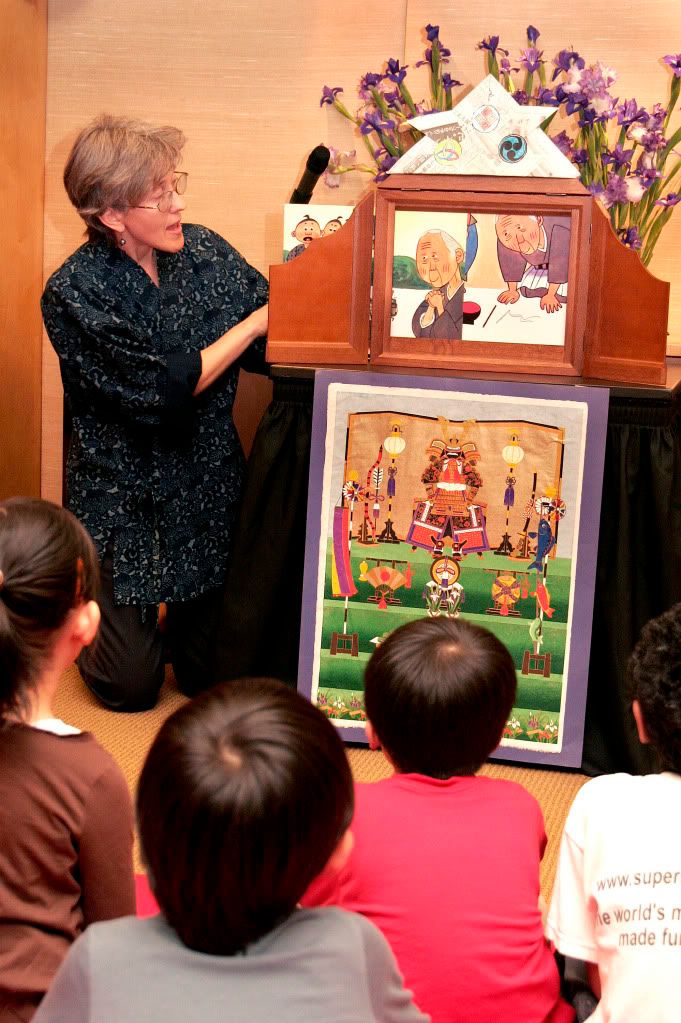 |
Manga Kamishibai
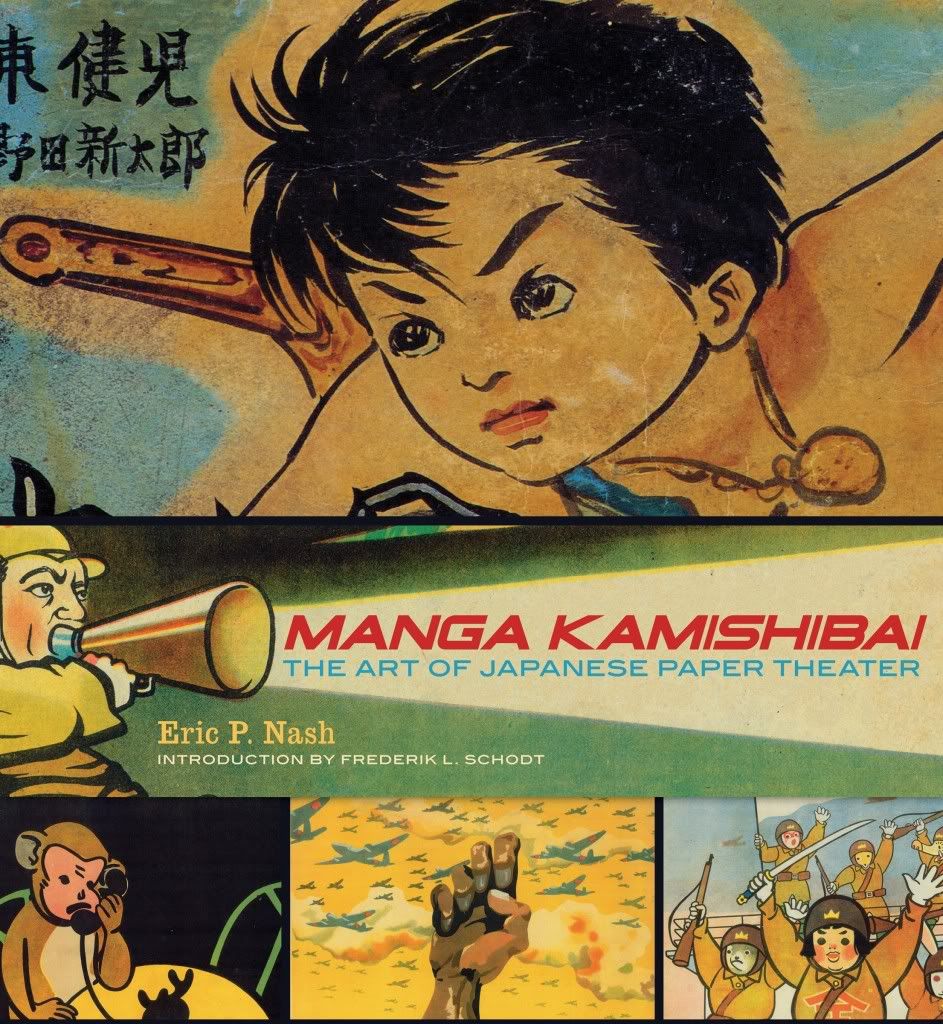
The Art of Japanese Paper Theater
For more information please go to our website!
Kamishibai:
A Versatile Tool to Develop
Reading, Writing
and Oral Storytelling Skills
|
|
Quick Links
Caldecott Medalist
Allen Say
Remembers
Kamishibai
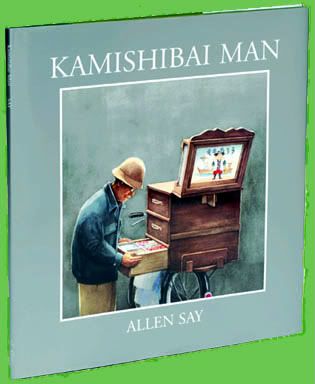
Asian Zodiac Postcards
2 examples:
|
|
|
The Kamishibai Classroom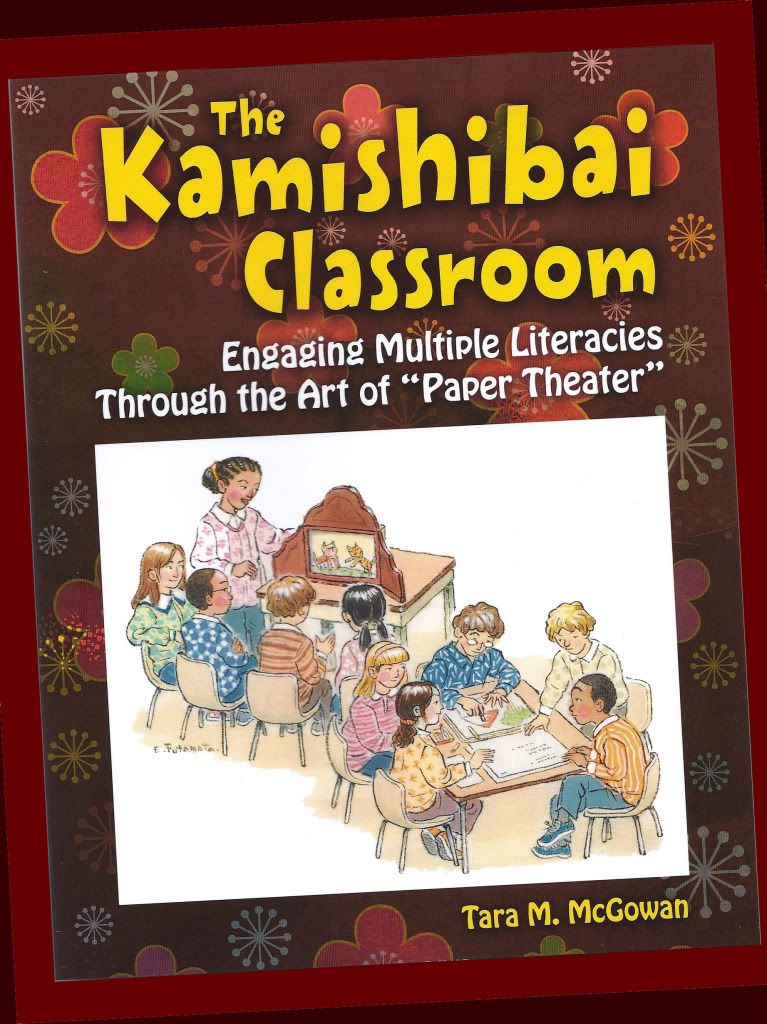
We are thrilled to share the exciting news that Tara McGowan's book, The Kamishibai Classroom: Engaging Multiple Literacies Through the Art of "Paper Theater" has just been published.
It is a breakthrough book introducing innovative ideas for using kamishibai story creation and performance as a teaching tool across curriculum and grade lines.
Tara has done extensive hands-on work with children of all ages in varied venues from public school classrooms to community centers.
The interactive workshops that she outlines in the book are perfect for getting students involved in the fun and learning that occur when they create and perform original kamishibai stories.
The Kamishibai Classroom is elaborately illustrated and provides step-by-step instructions for implementing kamishibai workshops in the classroom and integrating them into interactive performances across the disciplines and for all ages. |
Kamishibai of the Month - The Three Magic Charms
The Japanese are very sensitive to subtle changes in the seasons. They play an important part in determining what people eat, the gifts they give, the way they decorate their homes and even the kamishibai stories they tell. A kamishibai tale that you might enjoy telling in the spring is The Three Magic Charms, which won the Japanese Gozan Prize for the best kamishibai in Japan. The priest's young apprentice's use of paper charms to ward off the yamanba, or mountain woman, is evocative of the ritual scattering of beans on Setsubun, the 3rd or 4th of February, to drive away malevolent spirits in anticipation of the coming spring.
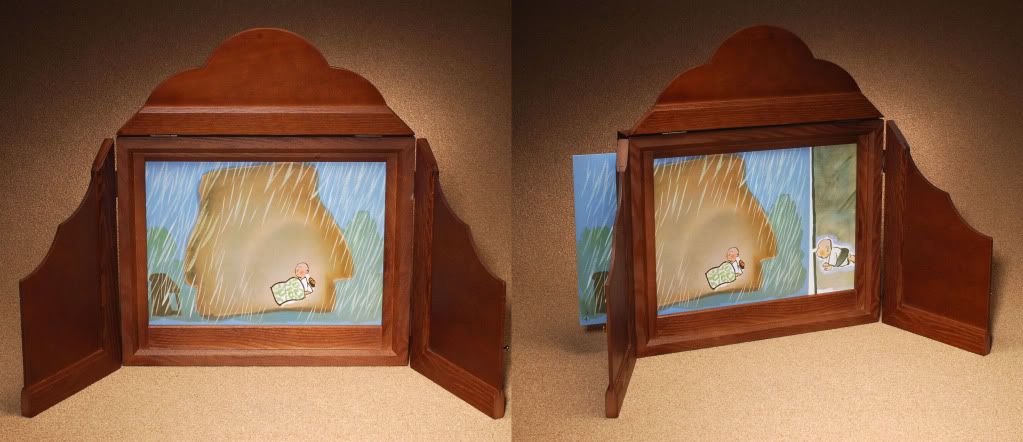 In this tale, a young temple acolyte is tempted by an overly solicitous old woman to visit her home deep in the mountains to eat his fill of chestnuts, his favorite food. The priest lets him go but wisely arms him with three paper charms for protection. He knows that the woman is probably a yamanba, or scary mountain woman. The boy uses his ingenuity and the magic charms to ward off the woman and returns safely to the temple where the yamanba finally meets her match. The ending will both surprise and delight your audience!
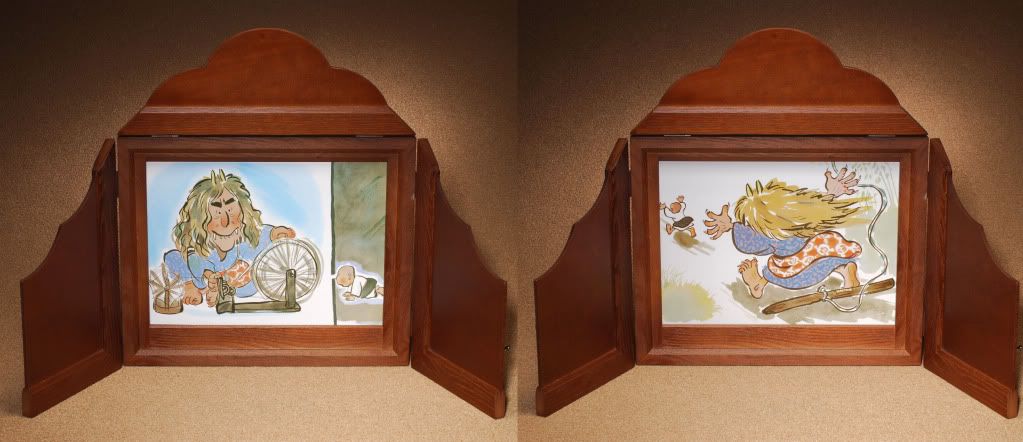
The Three Magic Charms is a popular tale among storytellers and audiences alike, for its well-paced story line, its simple but powerful illustrations and its dramatic possibilities. This is not surprising as the author, Miyoko Matsutani, is a well-known juvenile writer and folk tale collector and expert. Eigoro Futamata, the illustrator, won the prestigious Gozan Prize for this illustrations, and they are often cited as kamishibai illustrations at their best. You and your audience will never tire of performing and watching this tale. |
|
Special Highlights of
The Kamishibai Classroom: Engaging Multiple Literacies Through the Art of "Paper Theater" 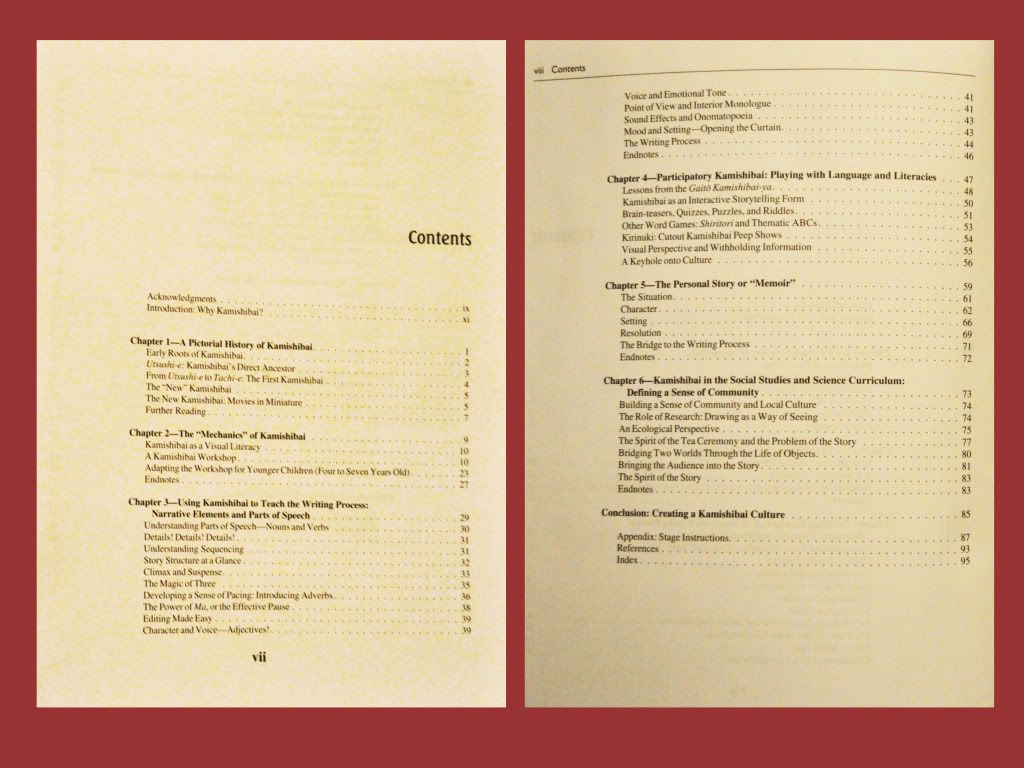 |
- Offers educators a concrete, hands-on approach for developing narratives through multiple literacies in a way that will appeal to even the most reluctant learners
- Shows how kamishibai provides a unique bridge to the reading and writing process, while also building confidence and a sense of community through interactive performance before a live audience
- Offers a pictorial history of kamishibai and how it evolved out of various etoki (picture-storytelling) traditions in Japan
- Provides an appendix with instructions for how to make kamishibai stages from readily available, recycled materials
Tara M. McGowan is a doctoral candidate at the University of Pennsylvania's Language and Literacy in Education Division of the Graduate School of Education. |
|
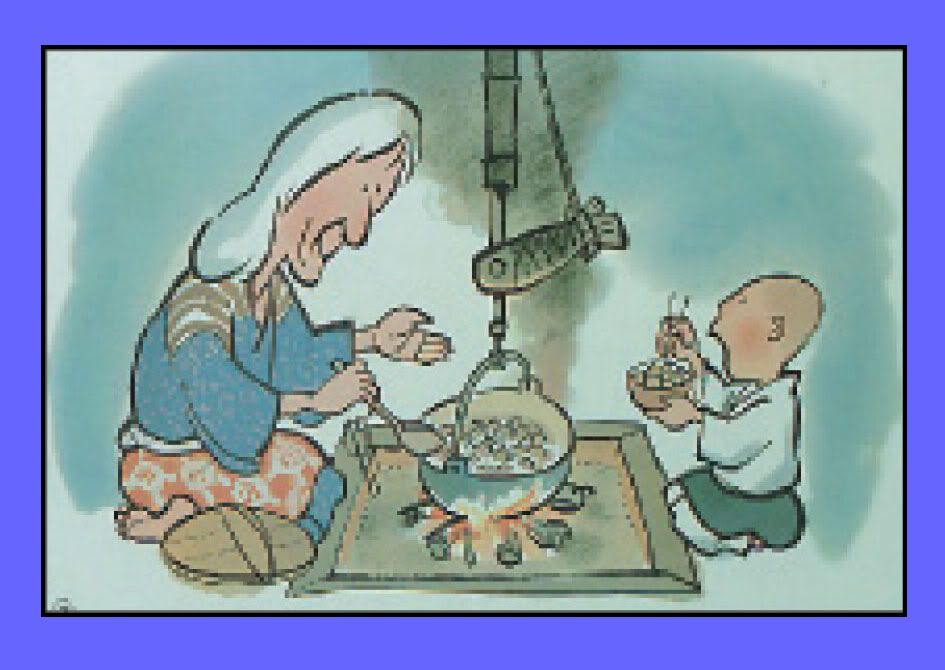 More About Setsubun and Magic Charms More About Setsubun and Magic Charms
Setsubun comes at the beginning of February, and there are various ways Japanese people observe this event. According to the traditional Japanese calendar, it comes on the last day of the season of the "great cold" (daikan). Thus, to prepare for spring planting, people long ago purified themselves at this important division of the year, or setsu and performed magical rites to ward off evil.
Some of the rituals people still perform today to protect themselves are to stick a sardine head on a holly twig and display it outside the front door. Or to roast dried soybeans, place them in a small, square woodenbox and if there is someone born under the Chinese zodiac sign of the year (tiger in 2010), have them scatter the beans inside and outside the house saying "Oni was soto. Fuku wa uchi." (Demons outside! Good luck inside!) Family members also eat the same number of beans as their age. Celebrities born under the zodiac sign of the year throw beans from a large building at famous temples or shrines, and crowds stand below to catch the beans.
The magic charms (sometimes called protective amulets) in The Three Magic Charms are strips of paper which are often sold at Japanese temples and shrines and are affixed to the wall in the kitchen, over the front door or placed in family altars to protect the house from fire, burglary or to pray for good health and happiness for the family members. (For more information see Teachers Notes for The Three Magic Charms).
Can you think of things you have in your house or actions you perform which are magical." (E.g. rabbit's foot, horseshoe, wishbone, hex mark on barn doors, "Christian" door, with panels that resemble a cross and Bible, crossing fingers, knocking on wood. etc.). Perhaps you have your own special charm!
|
|
|